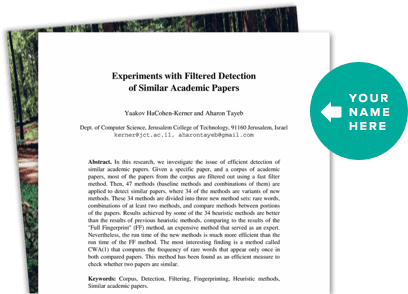About This Project
Heart issues are common in lions, in both captivity and free ranging. Lion heart health requires periodic examinations. The cardiothoracic ratio and vertebral heart scale are among the most efficient and cost-effective methods for assessing cardiac size. The former compare the cardiac area with thoracic area , while the latter compares heart dimensions with thoracic vertebra. Comparing these measurements with cardiac biomarkers will establish mean values for lions during examinations.
Ask the Scientists
Join The DiscussionWhat is the context of this research?
Lions face numerous stressful and adverse environments, both in captivity and in the wild, leading to various pathological effects on multiple organs, including the heart, which is central to circulation and vital for maintaining optimal heart health throughout their lives. In animals, early diagnosis and management of cardiac issues result in more favourable outcomes compared to late diagnoses. Additionally, in sanctuaries and zoos, reduced activity may hinder the early detection of heart problems. Consequently, vertebral heart scale (VHS) and cardiothoracic Ratio (CTR) radiographic methods will furnish crucial data for veterinarians, enabling more effective care for lions and ensuring improved quality of life and welfare for these animals.
Comparing blood biomarkers such as N-terminal pro–B-type natriuretic peptide (NT-proBNP), which elevates during myocardial stretch, with VHS enhances the sensitivity and specificity of mean values for detecting changes in heart size.
What is the significance of this project?
This project offers numerous advantages, including time and cost savings in diagnosing and treating lions with cardiac conditions, early detection of cardiomegaly ensures improved outcomes.
This project will also evaluate lifestyle and management standards in zoos which will serve to create criteria for assessing diet quality such as taurine insufficiency, a common cause of Dilated cardiomyopathy in felines, iron deficiency which causes cardiovascular diseases in felines and supplying reliable data for lion breeding.
Delivering high-quality data for wildlife cardiology and guaranteeing its extensive application in both captive and free-ranging situations can help identify thoracic masses and anomalies through radiographs conducted for VHS and CTR.
What are the goals of the project?
Twenty-five lions will be involved in the experiment, with inclusion criteria comprising healthy lions aged one year and older, without systemic disorders, non-pregnant lionesses, and free from any lung lesions that could interfere with thoracic radiographs.
Healthy individuals selected post-anesthesia based on physical examination, hematological, and biochemical profiles for each lion.
Determining cut-off values for both the Cardiothoracic Ratio (CTR) and the Vertebral Heart Scale (VHS) in relation to cardiac NT-proBNP readings, as well as the correlation between CTR and VHS, will yield trustworthy data and address the gaps in lion cardiology.
This initiative offers an accessible and economical approach for assessing cardiac dimensions in lions. To identify heart hypertrophy in lions promptly and administer appropriate treatment.
Budget
The budget are required for the following :
The budget items outlined in this proposal encompass the primary components and equipment required to acquire and preserve the requested data for this project. It encompasses visiting to zoos in various locations and purchasing anaesthesia supplies and other logistical elements for the work. Controlling Twenty-Five healthy lions using blowpipe techniques and injected anaesthesia then transport to veterinary hospitals.
Radiographic exams for both Cardiothoracic Ratio and Vertebral Heart Scale require four sets of X-rays. During expiration and inspiration, using ventrodorsal and lateral views. Feline NT-proBNP ELISA kit, transportation fees, and associated charges
Endorsed by
 Project Timeline
Project Timeline
1-4 months data collection through capturing lions and transferring to nearby veterinary hospital
1 month laboratory examination using Feline NT-proBNP elisa kit
1 month analysis and paper preparation
Mar 10, 2025
Project Launched
Apr 20, 2025
Travel to baghdad to zawraa zoo for lion examination
Jun 01, 2025
Travel to erbil zoo for lion examination
Sep 01, 2025
laboratory examination
Oct 01, 2025
finalizing paper preparation
Meet the Team
Amanj Ahmed
As a zoo veterinarian and supervisor at Chaviland Zoo in Sulaimani City, Iraq, I have always been deeply passionate about wildlife medicine and dedicated to the preservation of the health of wildlife species. I have always been interested in providing the best environment and healthcare services to animals, particularly iconic animals such as the lion.
I am currently pursuing a master's degree in feline and canine cardiology at the University of Sulaimani in addition to my work at Chaviland Zoo. My objective is to collect essential data that will assist veterinarians in zoos and wildlife in assessing the size of lion hearts, a critical step in ensuring their health and well-being.
I am a zoo veterinarian who is very concerned about the health of animals. The monitoring of their health necessitates a good environment and healthcare. The heart is one of the organs that is most affected by stressors and harsh conditions. It would be a game-changing discovery if early heart size alterations could be identified, particularly in the absence of much data on the heart health of lions. Consequently, we will provide management and treatment protocols.
Lab Notes
Nothing posted yet.
Project Backers
- 1Backers
- 1%Funded
- $20Total Donations
- $20.00Average Donation


